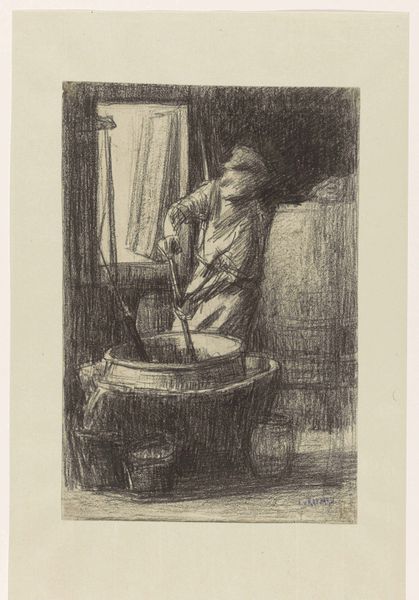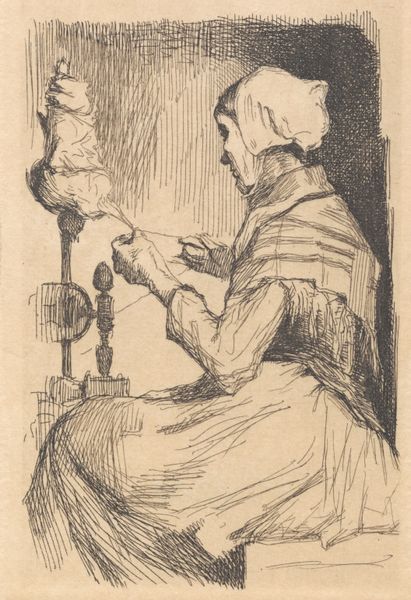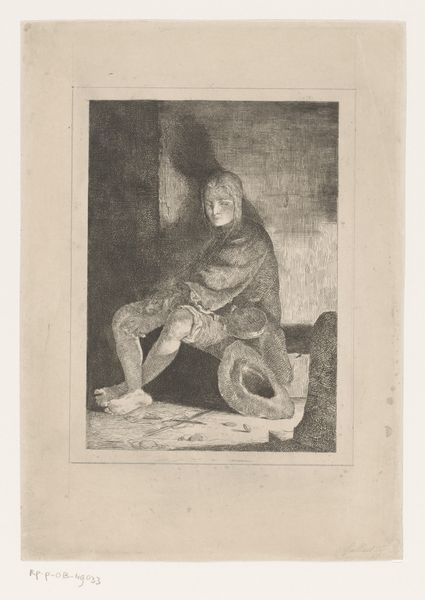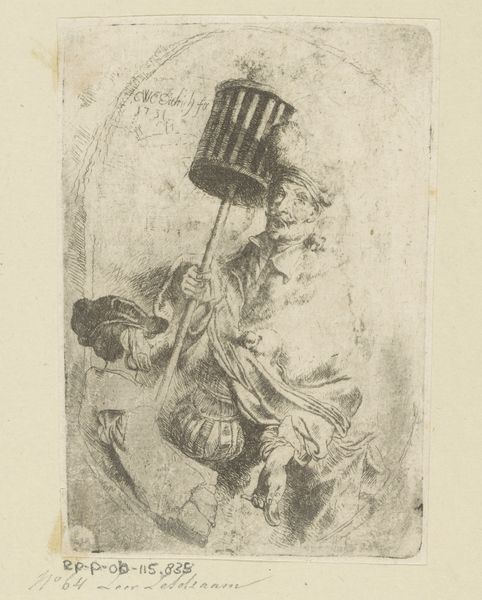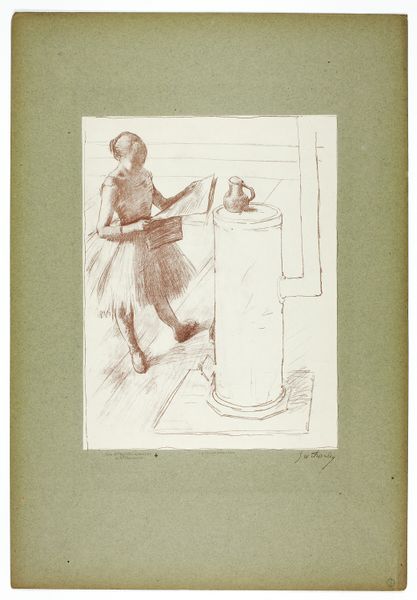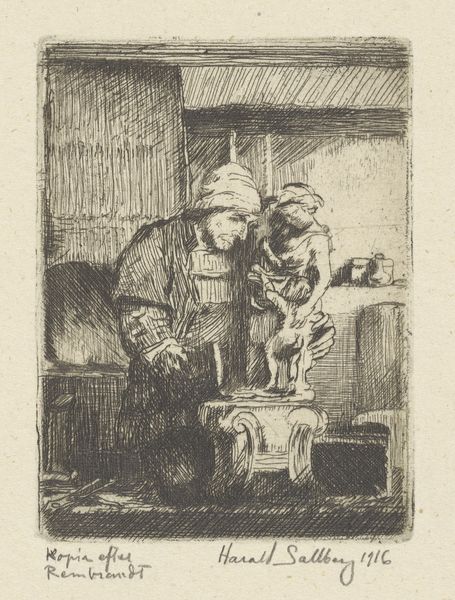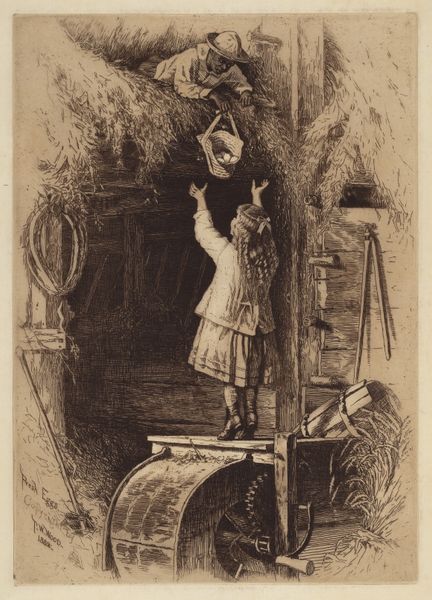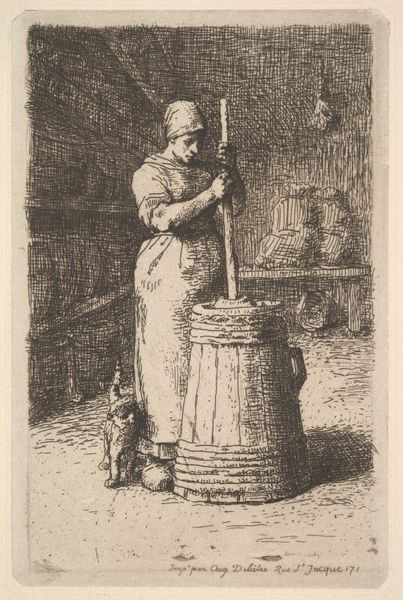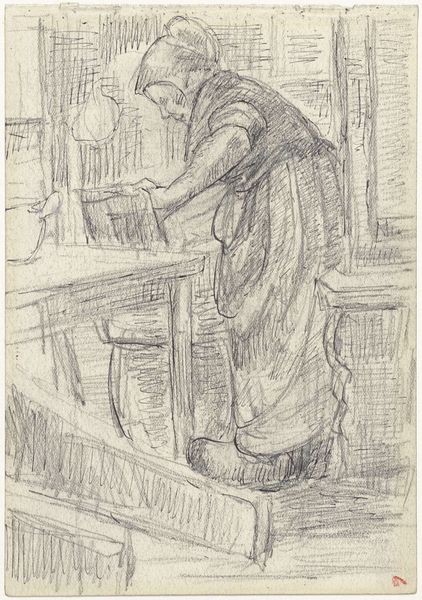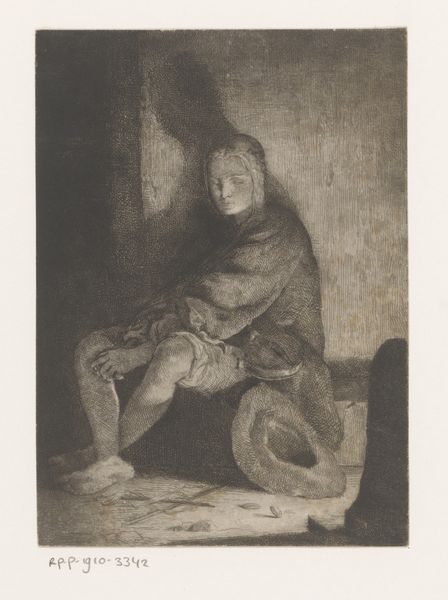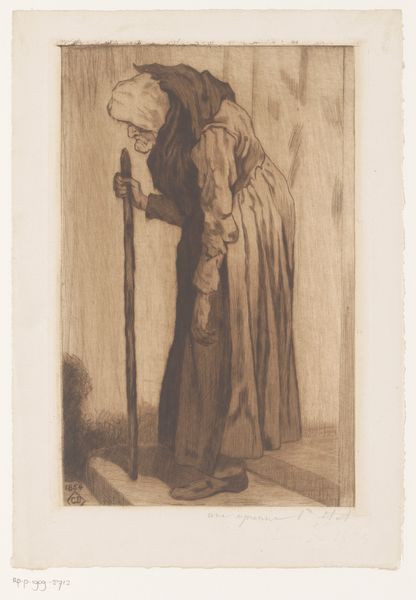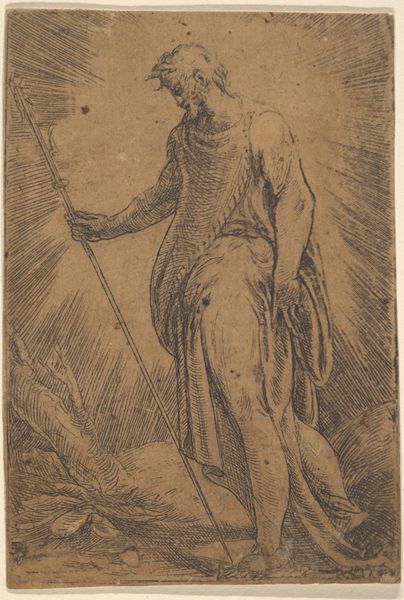
drawing, print, etching
#
portrait
#
drawing
# print
#
etching
#
figuration
#
genre-painting
#
realism
Dimensions: sheet: 9 7/16 x 6 5/8 in. (23.9 x 16.8 cm) plate: 7 5/8 x 5 3/8 in. (19.4 x 13.6 cm) image: 7 1/16 x 4 1/2 in. (17.9 x 11.5 cm)
Copyright: Public Domain
Curator: This etching, dating from 1885 to 1887, is William Merritt Chase's "The Churner," currently housed in the Metropolitan Museum of Art. It presents a solitary figure engaged in the act of butter churning. What are your immediate impressions? Editor: The grayscale and composition lend a sense of melancholic toil. The starkness contrasts sharply with the labor depicted. It feels intimate yet removed, a commentary on the social invisibility of domestic work. Curator: Chase’s artistic method here—etching—is central. It is a labor-intensive printmaking process that transforms a metal plate into a matrix capable of yielding multiple images, suggesting accessibility to wider audiences and maybe democratizing art. Editor: Precisely. And how might this reproductive medium also mimic the repetitive nature of labor, such as the churner’s actions? This intersects with the artist’s decision to center a working-class woman in the image. We might consider what political or societal statement Chase might have been making about women’s roles and the value placed on labor. Curator: It prompts considerations on material conditions, like the sourcing of materials used, the etcher's need of nitric acid and beeswax. The level of technical proficiency indicates an apprenticeship and mastery. Furthermore, distribution involves questions about market exchange and consumption. Who bought this print, and where was it sold? Editor: Also, in exploring the churner’s representation, let's reflect on whose stories are privileged by art institutions and by whom? Is Chase attempting an authentic portrayal, or does he, a male artist, merely aestheticize her struggle within prevailing gender dynamics? Curator: I wonder too if "realism" truly encompasses this choice. It has romantic inclinations. I see how technique merges with vision to affect not only visual output but also to address concerns about the state of industrial manufacture during Chase's period. Editor: Absolutely, by understanding and questioning all facets from conception to presentation, can we reveal inherent structural underpinnings and interrogate deeply-ingrained historical biases within "art history" itself. Curator: Through dissecting its artistic production, we have examined how an art piece’s worth can become untethered both literally by its materials—from source to market sale—and conceptually by cultural viewpoints. Editor: That interplay illuminates the intricate network enveloping "The Churner". Our analysis has been about appreciating it—but appreciating labor and its representations critically, with mindful historical context.
Comments
No comments
Be the first to comment and join the conversation on the ultimate creative platform.
